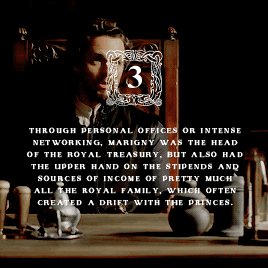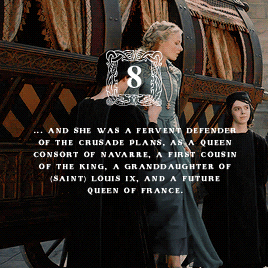#Affaire de la tour de Nesle
Explore tagged Tumblr posts
Text

Portrait of Blanche of Burgundy (1296-1326), wife of Charles IV of France.
Small mistake: the wife of Charles IV of France was not Marguerite de Bourgogne, but Blanche.
Daughter of Otto IV of Burgundy and Mahaut of Artois, she married the third son of King Philip IV the Fair in 1308 and was not destined to reign.
#royaume de france#capétiens#blanche de bourgogne#reine de france#reine de navarre#vive la reine#maurice druon#les rois maudits#the accursed kings#comtesse de la marche#comté de la marche#comtesse de bigorre#Maison d'Ivrée#Affaire de la tour de Nesle#full length portrait#illustration#full-length portrait#le roi de fer#La Reine étranglée#bourgogne#burgundy
4 notes
·
View notes
Photo

In 1314, the daughters-in-law of Philip IV, Margaret of Burgundy (wife of Louis X) and Blanche of Burgundy (wife of Charles IV) were accused of adultery, and their alleged lovers (Phillipe d'Aunay and Gauthier d'Aunay) tortured, flayed and executed in what has come to be known as the Tour de Nesle affair.
4 notes
·
View notes
Photo









Proving the innocence of Marguerite, Jeanne and Blanche of Burgundy in the Tour de Nesle Affair, based on Gaëlle Audéon’s work, Philippe Le Bel et l’Affaire des Brus, 1314, Nouvelle enquête sur une affaire d’Etat, ou pourquoi les femmes n’ont jamais régné en France (2020)
By framing Marguerite of Burgundy and her sisters-in-law/cousins, Jeanne and Blanche of Burgundy, for an imaginary crime, Marigny was presenting their three husbands, Louis, King of Navarre, Philippe, Count of Poitiers and Charles, Count de La Marche, as incompetent, naive and in a much larger measure, unfit to rule. He successfully diverted the attention away from the Crusade, avoided bankruptcy, steadily isolated the King by driving a wedge with the House of Burgundy (the Count being Marguerite’s brother), nipped in the bud any hypothetical rivalry to come with the future Queen Consort, and refocused the debate onto the ‘Flanders issue’, thus reaffirming his position as the almighty advisor at the expense of the Princes and the Barons.
As for Isabella of France’s possible involvement, Gaëlle Audéon suggests that, if she was involved at all (being then on a diplomatic trip to France, which brought her together with her family on a regular basis in the days leading up to the event), it is very possible that she was manipulated by Marigny as well. Her father’s advisor was already a valuable member of the government when she was born in 1295, owing his position to Isabella’s late mother, Jeanne of Navarre, with whom he was brought up. On various occasions Marigny was sent to England as an ambassador, thus a familiar face for Isabella to hold onto, and it’s very likely that it is through these trips across the Channel and thanks to detailed accounts on the English court by Marigny that Philippe IV was able to take measures in order to ensure Isabella’s comfort when her husband was favouring Gaveston openly at the expense of his daughter. If, and only if, Isabella was involved in her sisters-in-law’s misfortune, her role would have certainly not been to expose them out of personal revenge, as Audéon notes, but rather that she possibly offered to break the news, which she held from Marigny (whom she obviously thought was a reliable source), to her father the King. Another hypothesis is that she was simply told by her father only a few hours before the three princesses were arrested.
Lastly, it was Marigny who, in November 1314 (barely six months after the ‘Affaire’ broke out), enforced a new law that rejected the daughters from the Poitiers succession, when Philippe IV was dying. This new rule would eventually, decades later, lead to the Salic Law preventing the Filles de France from inheriting the French throne. That the King’s principal advisor would take such a drastic measure while his King is laying unresponsive (Philippe IV was comatose, since a hunting accident the day before) is definitely a testament to his cynicism, notes Audéon, and that the man was very much capable of the worst if it came down to it.
#historyedit#marguerite de bourgogne#jeanne de bourgogne#blanche de bourgogne#mine#*#14th century#yes i read this book in less than 24h#no i'm not feeling well#they deserved so much better i'm so sad :(
248 notes
·
View notes
Photo

Today in history, April 29, 1326: the death of Blanche of Burgundy:
"Blanche of Burgundy (c. 1296 – 29 April 1326) was Queen of France and Navarre for a few months in 1322 through her marriage to King Charles IV the Fair. The daughter of Count Otto IV of Burgundy and Countess Mahaut of Artois, she was led to a disastrous marriage by her mother's ambition. Eight years before her husband's accession to the thrones, Blanche was arrested and found guilty of adultery with a Norman knight. Her sister-in-law, Margaret of Burgundy, suffered the same fate, while her sister Joan was acquitted. Blanche was imprisoned until she became queen, when she was moved to the coast of Normandy. The date and place of her death are unknown; the mere fact that she died was simply mentioned on the occasion of her husband's third marriage in April 1326.
Blanche was the younger daughter of Otto IV, Count of Burgundy, and Mahaut, Countess of Artois. Her father died in 1302, leaving the county to Blanche's younger brother, Count Robert. Blanche's elder sister Joan was supposed to marry King Louis the Headstrong of Navarre, the eldest son and heir apparent of King Philip the Fair of France, but Philip the Fair changed his mind and arranged for her to marry his second son, Count Philip the Tall of Poitiers, in 1307. The same year, Louis married Margaret of Burgundy. The Countess of Artois was proud of this achievement and quickly started negotiating her younger daughter's marriage to Count Charles the Fair of la Marche, King Philip's third son, offering a huge dowry. The negotiations were successful and on 23 September 1307, the eleven-year-old Blanche and two years older Charles concluded a marriage contract. The marriage ceremony was hastily performed at Countess Mahaut's castle in Hesdin in January 1308. At first, the Count and Countess of la Marche had an unremarkable marriage that was neither as flawed as that of the King and Queen of Navarre nor as harmonious as that of the Count and Countess of Poitiers.
In 1313, the Countess of la Marche's sister-in-law and brother-in-law, Queen Isabella and King Edward II of England, paid a visit to King Philip. Isabella presented her brothers and sisters-in-law with embroidered coin purses. Later that year, upon their return to London, Isabella and Edward held a banquet during which the Queen noticed that the coin purses she had given to Blanche and Margaret were now in the possession of the Norman knights Gautier and Philippe d'Aunay. From that she concluded that the brothers were having relationships with her sisters-in-law. When she visited Paris again in 1314, she informed King Philip about her suspicions.
Blanche and Margaret were soon accused of inappropriate conduct, such as drinking and eating with the knights, and of eventually committing adultery with them in Paris guard tower known as the Tour de Nesle. Blanche's sister Joan was accused of hiding the affair and later of participating in it.
The accusations against Countess Blanche and Queen Margaret were more than likely true, but several 14th-century chroniclers believed that their father-in-law's popularly despised chamberlain Enguerrand de Marigny might have falsely incriminated them and the knights.
After a certain period of time, King Philip ordered the arrest of all his daughters-in-law and the knights. Following torture, the knights confessed to adultery and admitted that it had lasted three years. The Countess of la Marche and the Queen of Navarre were tried before the Paris Parlement and were found guilty of adultery. Their heads were shaven and both were sentenced to life imprisonment underground in Château Gaillard, while their lovers were condemned to death and duly executed. Her first child, a son named Philip, was born around 5 January 1314 and thus before the accusation of adultery levelled at his mother, so presumably his paternity was not challenged; her second child, a daughter named Joan, was born in 1315 after the trial, so some doubt about her paternity was suggested by the contemporary Continuatio of the Chronicle of Guillaume de Nangis, moreover because reportedly Blanche became pregnant either by one of her jailers or by her own husband ("a serviente quodam eius custodiæ deputato dicebatur...a proprio [comite] diceretur"); however, she was presumably accepted as part of the royal family according to later sources. Despite her disgrace, Blanche remained in contact with her ambitious mother and often received gifts from her.
King Philip, severely shocked by the scandal, died within a year. Margaret, now queen of France, died imprisoned soon thereafter, probably murdered. Louis's reign was cut short by his sudden death. Soon, Philip the Tall and Blanche's sister Joan became king and queen of France and Navarre. It was suggested that Blanche was treated better once her sister became queen, but that was concluded from a single misinterpreted document and may not be entirely accurate. Queen Joan did, however, arrange for her youngest daughter Blanche to become a nun, hoping that the seven-year-old's cloistered life would atone for her sister's transgression
Pope John XXII annulling the marriage of Charles the Fair and Blanche of Burgundy
On Philip the Tall's death on 3 January 1322, Blanche's husband inherited the crowns. Blanche thus became queen of France and Navarre, but her husband still refused to release her. Both of her children died in infancy, Philip before 24 March 1322 and Joan on 17 May 1321. Charles requested annulment of their marriage, to which Blanche reluctantly agreed. The annulment was justified by the claim that Blanche's mother was Charles's godmother, although probably the real reason was Blanche's pregnancy during her imprisonment. Pope John XXII declared their marriage null and void on 19 May 1322, and gave both Charles and Blanche permission to remarry. The Countess of Artois requested, among other things, the return of her daughter's enormous dowry.
Though she was replaced immediately by Marie of Luxembourg, there was no hope for Blanche to remarry, as she was sent to Gavray Castle. There is no evidence that supports the common belief that she died as a nun at Maubuisson Abbey. Having spent eight years imprisoned underground, the former queen suffered from poor health. The date of her eventual death is unknown; the Pope mentioned her as dead in a document of 5 April 1326 issuing a dispensation for the marriage of her former husband and Jeanne d'Évreux."
8 notes
·
View notes
Link
Au XIVème siècle, sous le règne de Philippe le Bel, le sordide déballage d’une affaire d’adultère fait trembler les hautes sphères du pouvoir français : le scandale de la tour de Nesle. Affaire de mœurs, affaire d’état… Déjà… http://ift.tt/2npOLAX
#Le scandale de la tour de Nesles | historyweb.fr http://historyweb.fr/scandale-de-la-tour-de-nesle/
0 notes